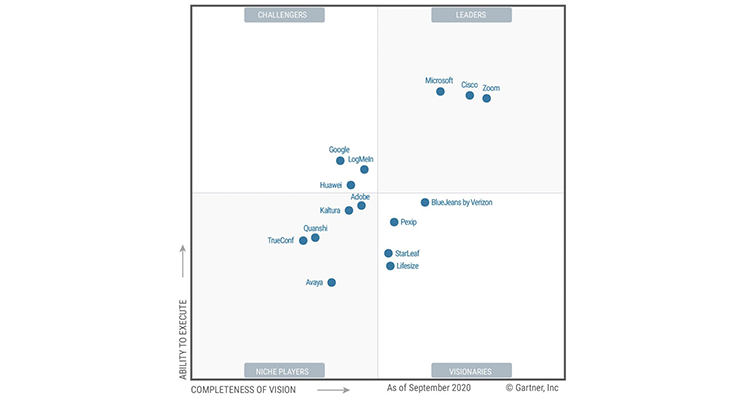AV Sales Approach and the Need to Change

The genesis of this article is recent research that has been done with interviews of salespeople in the tech field. Two elements stood out to me. The first is that the majority of those salespeople interviewed said that “sales is harder today than they were before.” The second and most disconcerting element was that salespeople responded that “96% of prospects do their own research before talking to a human sales rep — and 71% prefer to just do their own research instead of talking to a rep.” I shared these findings with several contacts in the industry for their reactions, and this resulted in a videocast (below) with THE rAVe Agency Director and Co-Founder Gary Kayye. The topic du jour was “AV sales and the fact that today, you might be doing it wrong.” The following are further thoughts and observations from the research and our podcast.
A favorite phrase that has long resonated with me is “Listen to the right voices and make the right choices.” Hearing is one thing, but listening is another. Under the umbrella of active listening, a few of my favorite business and marketing “voices” are Gartner, McKinsey, Harvard Business, Forbes and HubSpot. What follows has been gleaned from their collective “voices” and those of fellow subject matter experts and thought leaders dedicated to the continued growth of the AV and digital signage industries.
Let’s begin with the need to change and start with one definition of insanity that we are all familiar with. The most basic understanding is that insanity is “doing the same things over and over again and expecting different results.” The conclusion is that if you want different results, you must do some things differently. So, it is in AV and digital signage. In the case of our industry, traditionally we have been the repository of information for buyers, and in many cases the products and the value they provided (basically) sold themselves. What made us special was putting all the disparate products together in a system that matched one technology with another seamlessly. Yes we still do that today, and this will continue for the foreseeable future but conditions under which technologies are available and how buyers explore/compare and ultimately purchase has changed. This necessitates the need for us to change our sales approach.
There are two elements that “feed” this need to change. The first thing is the availability of information. I won’t belabor the point, but nearly 100% of buyers search the internet for information before making a buying decision. Over 70% of those decisions are made sans a salesperson’s involvement. Historically in AV, we met with two or three stakeholders; today the stakeholder participants have risen to 10 or even more, according to Gartner. People tend to believe what they see online but there is so much contrasting and conflicting information this can be (and often is) confusing. The question is whether the buyers are aware of the risks of insufficient or inaccurate information or not. This is where we fit in but only if given the chance. This brings to mind a quote by Louis Pasteur who famously said that “Chance favors only the prepared mind. Discoveries or insight don’t happen by accident.” He made this statement with reference to serendipity. He states that behind every discovery or achievement, there is a lot of hard work and preparation put in. So, it is in this case. We can’t leave our success to chance, and we must be prepared.
The second issue fueled by this information overload is commoditization and parity. A commodity is a good for which there is demand, but which is supplied without qualitative differentiation across a market. The technical term is fungibility. This refers to a product’s interchangeability with other individual products of the same type. Products possessing this property “simplify” the exchange/trade process, as interchangeability assumes that everyone values all goods of that class as the same.
One characteristic of a commodity is that its price is determined as a function of its market. Commoditization occurs as a market for goods or services loses differentiation across its base. As such, goods that formerly carried premium margins for market participants have become commodities, such as silicon chips, laptop computers and AV products like flat panel displays.
This presents an uphill battle for us in AV. The buyers believe they know so they don’t think they need a salesperson to guide them. They have an (often misguided) sense of security with so-called plug-and-play technologies so in their minds there is no need for integration. They believe this will all work seamlessly as a system. Suffice it to say many are unaware of the risks and downsides. Obviously, this begs the question of how to get them to listen and understand. The answer is that in some cases they will not listen and as a result many times they will suffer the consequences (aka regret). Our mission should be to enter their decision-making process before “harmful” things can happen. Our real challenge then is how to get buyers to bring us into the picture (pun intended) in the first place.
With a reduced need for basic information, we need to provide something new that they will value beyond the description of the products we sell. The key to this is adding value in the eyes of the stakeholders. “Value creation” is an MBA-sourced phrase used daily in business, so it is important to define value. In its most basic form, there is only one definition of value that is useful for business and that is something someone is willing to pay for. Your company can create great things, but if people aren’t willing to pay for what your company creates it lacks the buyer’s perception of value. This simple “willingness to pay” definition is very powerful. The only way to avoid commoditization paralysis is to identify how your company can deliver more of what people are willing to pay for.
To the first order we must be noticed. In a recent article for AVIXA entitled “To Be of Not to Be in AV,” I wrote about the need to be thought of as “special” (aka a person providing value). Being seen as one among many is a form of human commoditization. I went on to speak about how we as consumers gravitate to specialist in numerous categories from medicine, to legal, to accounting. We need to be seen as specialists. I then pointed out the need to get industry certifications as evidence of standing out from the crowd. This will go a long way to making a company and individuals appear “special.”
Once noticed and hopefully in the door, a person must seal the deal by adding value beyond products and individual solutions. The ultimate goal is to become what one subject matter expert says is a “business fit.” At this level, salespeople have established their bona fides (qualifications and good intent) and become involved in the business in mission-critical areas, identifying critical business issues and helping devise targeted solutions that help customers increase market share, cut costs and enhance customer satisfaction. Salespeople at this level show “how two companies, working together, can help achieve critical objectives, implement important strategies, and address important issues.” While the business fit will be different for every account, it always identifies the basis for a long-term, strategic relationship, and states the value of the relationship in the customer’s terms.
In HubSpot research conducted with salespeople experienced in a consultative and value-added approach the following suggestions were noted:
- Research the company, departments, and buying process. Understand all the stakeholders involved in the buying process. You must understand everyone’s role and what each of them care about. This way, you can tailor your solution to each person and build credibility Research shows “the most successful sales reps have buy-in from multiple different individuals from a company so make sure to not only care about the decision-maker but care about everyone who is involved in the sales process”.
- Utilize a clear process and have an agenda in place. This communicates what the sales process is going to look like and creates credibility and a sense of trust and safety with your prospect. They know what’s coming and feel secure.
- Personalize and engage on a human level. Share things in common. This builds trust.
Provide value -added metrics (i.e. research, reports, and trends) that may be of interest.
Share success stories. This facilitated prospects to envision themselves as successful with you, your products, and services. - Share control with your prospects. If you act as a consultant, you provide them with information but remember they’re also contributing to the process. Salespeople should lead the sales process in a give and take manner but not control it.
- Tell prospects who is and isn’t a fit for your services. Salespeople sometimes have a bad reputation for being “untrustworthy” because there are ulterior motives in the conversation.
- That’s why you need to be open about who is or isn’t a good fit for your services.
- Be willing to walk away from a deal if it isn’t a great fit for you or the prospect. “Prospects can smell it when you aren’t acting with their best interests at heart, and they should because you aren’t.”
I want to circle back to the genesis of this article with some good news from Gartner sourced research data. In its “Purchase Completion Research” study, Gartner found that 40% of buyers preferred self-service digital commerce, 32% traditional rep-led and 28% rep-assisted digital commerce. The clear trend was to self-service digital but … drum roll please … the firm also found that 43% of those who favored self-serve digital suffered “purchase regret” versus less than half that on traditional rep-led and even less than that for rep-assisted digital commerce. Translated the data shows that buyer satisfaction is most likely achieved in rep-assisted digital commerce! File this under a continuing need for sales rep involvement but in a different way than ever before.
In commerce (and in life) we live in a digital world of internet searches, keyboard clicks and the appearance of instant gratification. The appearance of gratification can be misleading. Research data shows that self-serve digital commerce alone can easily lead to “purchase regret.” By including a salesperson’s assistance in digital commerce, the regret is mitigated. Our task is to make our prospects aware of that. We need to add value in their eyes. We need to be thought of as specialists in our field and once engaged we need to be consultants and become a business fit beyond the products and services we sell. As Gary Kayye noted in the recent podcast, “Sometimes this means not selling.” As Kenny Rogers sang in his iconic song “The Gambler,” “You got to know when to hold them and know when to fold them … ” The “sales game” has changed, and we need to change with it.
An organization must review all aspects of its business to make sure all systems are supporting value creation and not falling into organizational commoditization paralysis. The sooner we understand market realities of the 21st century, the better … sales will be completed more quickly, margins will be improved, competition will be addressed and commoditization paralysis will become an afterthought.





